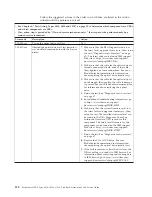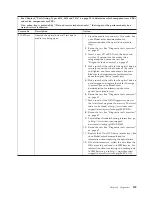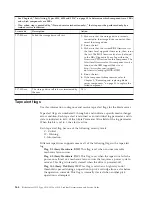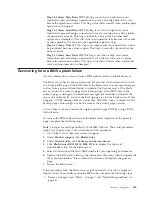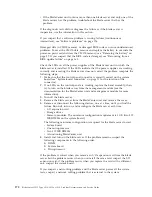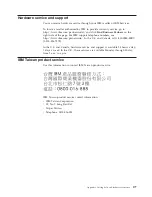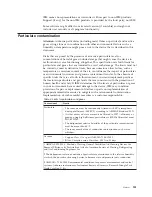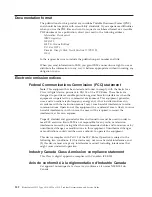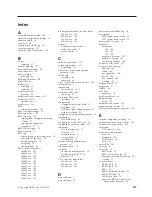
v
If the BladeCenter unit contains more than one blade server and only one of the
blade servers has the problem, troubleshoot the blade server that has the
problem.
If the diagnostic tests did not diagnose the failure or if the blade server is
inoperative, use the information in this section.
If you suspect that a software problem is causing failures (continuous or
intermittent), see “Software problems” on page 126.
Damaged data in CMOS memory or damaged BIOS code can cause undetermined
problems. To reset the CMOS data, remove and replace the battery to override the
power-on password and clear the CMOS memory; see “Removing the battery” on
page 57. If you suspect that the BIOS code is damaged, see “Recovering from a
BIOS update failure” on page 165.
Check the LEDs on all the power supplies of the BladeCenter unit in which the
blade server is installed. If the LEDs indicate that the power supplies are working
correctly and reseating the blade server does not correct the problem, complete the
following steps:
1.
Make sure that the control panel connector is correctly seated on the system
board (see “System-board connectors” on page 11 for the location of the
connector).
2.
If no LEDs on the control panel are working, replace the bezel assembly; then,
try to turn on the blade server from the management module (see the
documentation for the BladeCenter unit and management module for more
information).
3.
Turn off the blade server.
4.
Remove the blade server from the BladeCenter unit and remove the cover.
5.
Remove or disconnect the following devices, one at a time, until you find the
failure. Reinstall, turn on, and reconfigure the blade server each time.
v
I/O expansion card.
v
Storage drives.
v
Memory modules. The minimum configuration requirement is 1 GB (two 512
MB DIMMs on the system board).
The following minimum configuration is required for the blade server to start:
v
System board
v
One microprocessor
v
Two 512 MB DIMMs
v
A functioning BladeCenter unit
6.
Install and turn on the blade server. If the problem remains, suspect the
following components in the following order:
a.
DIMM
b.
System board
c.
Microprocessor
If the problem is solved when you remove an I/O expansion card from the blade
server but the problem recurs when you reinstall the same card, suspect the I/O
expansion card; if the problem recurs when you replace the card with a different
one, suspect the system board.
If you suspect a networking problem and the blade server passes all the system
tests, suspect a network cabling problem that is external to the system.
172
BladeCenter HS12 Type 8014, 8028 or 1916: Problem Determination and Service Guide
Содержание BladeCenter HS12 Type 1916
Страница 1: ...BladeCenter HS12 Type 8014 8028 or 1916 Problem Determination and Service Guide...
Страница 2: ......
Страница 3: ...BladeCenter HS12 Type 8014 8028 or 1916 Problem Determination and Service Guide...
Страница 36: ...24 BladeCenter HS12 Type 8014 8028 or 1916 Problem Determination and Service Guide...
Страница 186: ...174 BladeCenter HS12 Type 8014 8028 or 1916 Problem Determination and Service Guide...
Страница 190: ...178 BladeCenter HS12 Type 8014 8028 or 1916 Problem Determination and Service Guide...
Страница 198: ...186 BladeCenter HS12 Type 8014 8028 or 1916 Problem Determination and Service Guide...
Страница 203: ......
Страница 204: ...Part Number 60Y1601 Printed in USA 1P P N 60Y1601...

